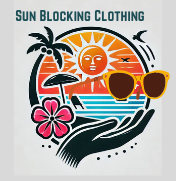Have you found the best colors for winter outdoor activities? Are you in tune with the benefits of spending time outdoors?

The Best Colors For Winter Outdoor Activities may not be important to our friends the Swedes. They live in one of the coldest and darkest climates on Earth, spend a great deal of their time outdoors! There is a Nordic concept of “open-air living” that is deeply ingrained in their culture.
Because of this, the Swedish population enjoys being one of the fittest and happiest people on the planet.
However, I don’t live in Sweden. I live in central Texas with sunny days and not so many overcast ones. We need to add the help color can give us for protecting our skin into our awareness. If we didn’t know, or couldn’t find out, it might be different.
To be able to enjoy yourself as the temperature drops from summertime highs of 100 + to the milder temperatures of fall and winter, you will need warmer clothing. Well, at least part of the day.
Often we head out in sneakers and our jeans with a sweatshirt. Then if the temperature gets cooler, we get cold. Enjoying being outside gets cut short, and we are ready to go home where it is warm.
Layers are important. So are a hat and gloves. Just as summertime skin protection from the sun is important, giving some thought to cool weather wear will enable you to enjoy the outside time more.
How Can Color Choices Help Me Stay Warmer?
If you’re not cold and uncomfortable, you’re more likely to enjoy yourself and not run back inside after five minutes. Investing in quality outdoor clothing definitely makes winter activities more enjoyable.
Unfortunately, I have lived a lifetime of limited outdoor playtime. My habits are not as healthy as they could be if I had made outdoors a bigger part of my life.
Learning about what colors to wear to stay warmer as the seasons change has not been something I paid attention to. I have usually had a heavy parka-type jacket, and some lighter-weight jackets or sweaters, a sweatshirt or two. That was it. Our cold weather was minimum.
As I think about having a larger sweatshirt to layer over my long sleeve tee shirt, it sounds much more comfortable than trying to layer “fitting-sized” shirts over each other. Layering, while paying attention to sizes will keep me more comfortable than thinking everything has to be the same size.
Teaching your kids the basics of layering is important, so they can enjoy the outdoors as well. With layers, the kids are covered and better protected. As they get warmed up riding their bikes or hiking along with you, a shirt tied around the waist will dry pretty quickly, as will the underlayer. Then when there is a break, the layer can go back on.
In our mild climate, we often try to just get by without any warmer clothing, resulting in being miserable, and cold. There is a method to the madness of layering to be warm, but having the freedom to cool down as well.

Colors For Staying Warm In Cold Weather
Darker colors absorb the sun’s rays and keep them off your skin with winter clothing, just like summer clothing. Holding the heat of the sun next to your body will keep you warmer in the early morning hikes and walks.
So colors like blues, black, browns, deep red, and purple. Darker greens and deep oranges are all good choices. Here again, fabric content is usually more important than color. Your lightweight shirt should be a wicking fabric to keep the trunk of your body able to dry fast.
Then layer a non-breathing lightweight layer to stop the wind if it is blowing. When the temperatures are getting colder, the top piece could be heavier, with a nonbreathing layer, or have a heavier layer to become the 2nd layer, with the wind-breaking layer moving to the 3rd layer.
The freedom to add or remove layers will give you so much more freedom than a super heavy layer only. We need to be able to enjoy all the weather seasons to be able to be outdoors. Understanding the way to use the layers is important.
Black, brown, dark blues, deep turquoise, red, green, and gold are good for layers close to your body. The next layer could be a medium-dark color or a light color, but the fabric needs to be tightly woven to hold in heat.
How The Garment Fits Is Important
This ability to layer garments and still be comfortable will only work when you consider the fit. With your layers closer to your body needing to not be too large or too tight.
Too large and it won’t be comfortable when you apply another layer unless that layer is also oversized as well. This gets you into a girded up feeling and you will have less ability to run and move easily. Although this is better than being too cold!
Having a well-fitting layer close to the body is a good base for your cooler-weather wardrobe. Then the next layer a bit larger is comfortable. The final layer should not breathe as you will want to trap body heat.
That is part of the comfort and warm feeling when you add a layer after you have been outside a while, and it has gotten cooler.
For those of us in our part of the world, a long-sleeved soft tee shirt, with a sweatshirt 2nd layer has long been our defense. Or, the ever-popular and comfortable flannel shirt. They are popular for a reason. They work!
Now that you know about color, you can make them work better for skin protection on those days when you are out in the sun. Deep colors soak up the heat and keep you warm. Lighter colors reflect the sun’s rays and should keep you cooler in milder temperatures.
Fabric Is Still The Most Important
Is your sweatshirt worn out because of too many times in the washer? It may be time to retire that shirt or treat it with Sun Guard.
When you are spending time in the out door activities during the cooler times of the year, it is important to pay attention to your layers of clothing. For hiking or other outdoor fun days, knowing what to expect with the weather will allow you to prepare properly.
Maybe it is a long pant, or warm-up day, or maybe both? We have many trails in central Texas that allow one to avoid most bushes and weeds that scratch or cause rashes on your legs. Even so, mornings in the shady part of the trail may make you wish for long pants.
Again, the fabric is usually more important than color. A tightly woven pair of long pants will do a good job of keeping you safe both from the sun as well as poison oak or brambles along the path. Knitted pants will catch more stickers and grass.
Color Knowledge As Outdoor Activities Gain Popularity.
No one wants to be a complete newbie who is identified by breaking the well know rules of their chosen outdoor activity.
Your outdoor wear should reflect the colors of the area you are in. Now for me, this complicates things! Our arid green and brown make us look like we are in army fatigues! These colors don’t show up? They blend.
People who are new hikers, or new to the area they are hiking in should consider some brighter colors. This will be good if you are ever separated from your group and get lost. If the color matches the foliage or terrain you are hiking in, you will be harder to spot.
Are you into extreme adventures or want to be? Knowing what colors will show up best is key to staying safe in these activities. In summer or winter, wearing colors that blend with the countryside can be dangerous. A bright-colored vest is a good investment.
No one wants to get lost. This is a downer on the excitement of the hiking adventure. However, it is a safety concern and should be considered. By not preparing ahead for emergencies you are allowing yourself to be vernable. Often the bright colors are attractive and look good at the same time.
As with all of our lives, a little prep work can keep your family safe and comfortable.
Make sure your little ones have what they need to stay safe from the sun and cold, as well as the safety colors. Keep your outdoor activities fun and safe for the whole family.
Color Summary
Bright colors are the safest colors for hiking. With neon orange, yellow, and bright red, all are great choices for making sure hunters and other hikers can see you.
The earth tones seem to be preferred by many hikers to reduce “visual noise” and avoid being noticed. Understandable, but don’t forget safety.
Don’t get careless about wearing a sun hat, as important in the winter as the summer. Your sunglasses don’t get neglected either. These 2 items are the mainstay of your skin protection from the sun.
Just A Short Bit About Real Wintertime
When the mountain peaks look like piles of powdered sugar. Then you have the sun so pretty and bright shining down? Your desire to be outside is understandable.
Just the right setting for skiers to expose themselves to a forgotten danger, sunburn.
Sun protection at the beach or while swimming, is long forgotten. However, protecting your skin is very important when in the snow and on the slopes.
Adventure seekers tend to stay out in the sun as long as they can, often exceeding the time limits of their sunscreen protection. Here is where your colors can help. A light-colored ski suit can keep you cooler if you are working hard at your adventure.
If the main times you spend time in the sun are on the lift back to the top of the mountain, a dark-colored ski suit will keep you warmer. Understanding some of the basics of color science will allow you to make better choices for your fall and winter outdoor activities.

Sami’s Take on Best colors For Winter Outdoor Activities
When you are thinking about the changing seasons, don’t forget to give some thought to protecting you skin as well. Winter sun may fool you because it does not seem hot. It may not be hot, but it is intense and dangerous.
With changing lifestyles, more people are opting for a healthier more active lifestyle. Often that involves more outside activities, yes even in the winter.
This winter outdoor activity interest makes a difference in your overall health. You can make a difference in your skin aging and sunburning by using sun blocking clothing and sunscreen for the winter, just as in the summer.
Knowing the basics of using color to keep the sun off your skin will give you a healthier and happier life.
Paying attention to wearing the layers that will work better for you will make all the difference. How will you keep your skin healthy this fall and whatwinter? Have you planned for a sunburn free fall and winter?
What are the hints you have for safe outdoor activity time? How do you stay safe? Sunburn causes skin cancer. Lets protect ourselves.
Thanks,
Sami
